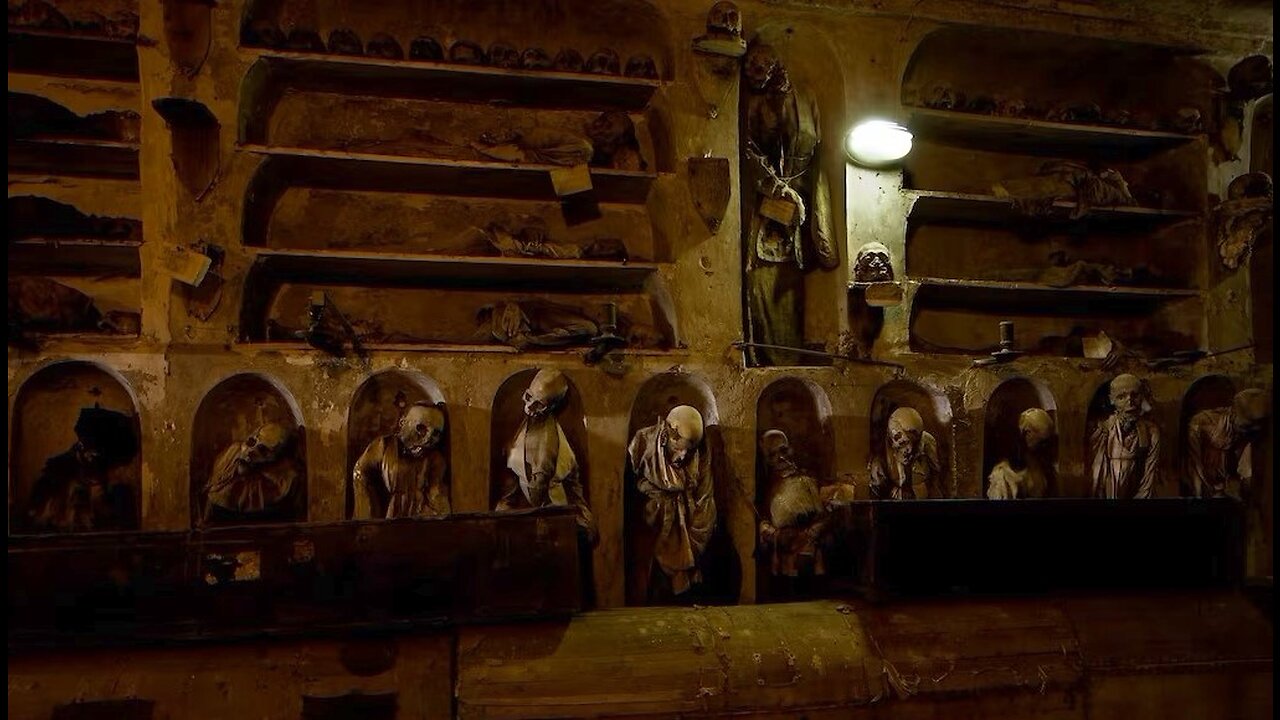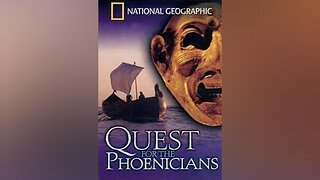Premium Only Content

The Capuchin Catacombs of Palermo
A 2011 National Geographic Documentary.
Arrayed in crypts and churches, with leering skulls and parchment skin, the desiccated dead of Sicily have long kept mute vigil. But now, centuries later, these creepy cadavers have plenty to say. Led by anthropologist Dario Piombino-Mascali of the Department of Cultural Heritage and Sicilian Identity in Palermo, the ongoing investigation is revealing how religious men and their wealthy supporters ate, interacted, dealt with disease, and disposed of their dead.
In the case of the Sicilian mummies, that means x-ray exams and CT scans rather than invasive sampling and autopsy. Radiographic techniques preserve the specimens—the oldest of which dates to 1599, when Capuchin friars began mummifying clergy, then nobles and bourgeoisie who hoped to secure blessed afterlives—even as they peek inside. Mummification in Sicily usually meant stowing a body in a ventilated chamber, draining it of bodily fluids, and stuffing it with straw or bay leaves, to preserve its shape and combat the stink of death. Months later it would be washed with vinegar, dressed in its Sunday best, and laid in a coffin or hung on a wall. The more recently mummified—like two-year-old Rosalia "Sleeping Beauty" Lombardo, who died of pneumonia in 1920 and lies with 1,251 others in the Capuchin Catacombs of Palermo—were embalmed with chemicals, and thus better preserved.
Mummy-experts try to rescue world’s greatest accumulation of mummies, endangered by humidity and showing signs of caducity, including the best preserved corpse worldwide: The little girl Rosalia Lombardo. Experts move to rescue the world’s greatest accumulation of mummies, endangered by humidity and showing signs of decay, including the world’s best preserved corpse: a two-year old girl from 1920.
"For many years the subject of death was taboo [in Sicily]," he says. "In the 20th century, things like the two world wars somehow influenced the approach Sicilians had toward death. They just didn't want to talk about it anymore.
"Now, given the scientific importance of what's emerging with these mummies, people are understanding that in Sicily, death has always been part of life. And for centuries many Sicilians were using mummification to make sure there was a constant relationship between life and death."
-
 55:47
55:47
Adaneth - History&Politics
7 days agoQuest for the Phoenicians
1508 -
 LIVE
LIVE
Sean Unpaved
1 hour agoNFL 2025: Teddy's Trouble, Dak's Narrative Shift, Purdy's Prove-It Year, & Raiders' Rebuild
196 watching -
 LIVE
LIVE
Side Scrollers Podcast
3 hours agoElon Musk Creates GOONING AI, DSP Lawsuit?, Disney Adults Hit NEW LOW | Side Scrollers Live
272 watching -
 LIVE
LIVE
Viss
2 hours ago🔴LIVE - Learn How to Dominate The Duo Battleground! - PUBG
152 watching -
 1:09:40
1:09:40
Coin Stories with Natalie Brunell
3 hours agoEpstein Files EXPOSED: CIA Black Ops, Money Crimes & Bitcoin's Rise
5.12K -
 LIVE
LIVE
GloryJean
3 hours agoTR2ing til it's nerfed 🖱️ 6.7 K/D
53 watching -
 1:07:30
1:07:30
Timcast
1 hour agoDemocrat Impeachment Leader Schiff ACCUSED OF FRAUD, Trump DOJ Targets Anti-Trump CONSPIRACY
145K66 -
 2:09:35
2:09:35
Nikko Ortiz
2 hours agoLive - AI Has Gone Too Far
83.2K2 -
 8:06
8:06
Dr. Nick Zyrowski
1 day agoMost DANGEROUS TOXIC ITEMS Hiding in Your Home - These Make Your Sick
10.3K1 -
 LIVE
LIVE
The Charlie Kirk Show
1 hour agoAn Epstein Special Counsel? + The Minneapolis Mamdani | Parnell, Caputo, Benz | 7.15.25
4,161 watching